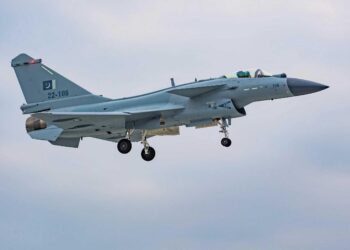US Government,
Report after report has indicated that the key to successful acquisition programs is getting things right from the start with sound systems engineering, cost-estimating, and developmental testing early in the program cycle.
Over the last twenty years, however, DOD has eliminated acquisition organizations and cut the workforce responsible for taking these actions, and has tried to “reform” the acquisition process by taking shortcuts around early program phases in which these actions should be taken. The result has been excessive cost growth in weapon systems and excessive delays in fielding those systems.
Title 1: Acquisition Organization
Section 101. Systems Engineering Capabilities. The Defense Science Board Task Force on Developmental Test and Evaluation reported in May 2008 that “the single most important step necessary” to address high rates of failure on defense acquisition programs is “a viable systems engineering strategy from the beginning.” The Government Accountability Office has reached similar conclusions. Unfortunately, the Committee on Pre-Milestone A and Early-Phase Systems Engineering of Air Force Studies Board of the National Research Council reported in February 2008 that the Air Force has systematically dismantled its systems engineering organizations and capabilities over the last twenty years. The other services have done the same.
Section 101 would address this problem by requiring DOD to:
(1) assess the extent to which the Department has in place the systems engineering capabilities needed to ensure that key acquisition decisions are supported by a rigorous systems analysis and systems engineering process; and
(2) establish organizations and develop skilled employees needed to fill any gaps in such capabilities.
Section 102. Developmental Testing. Many weapon systems fail operational testing because of problems that should have been identified and corrected during developmental testing much earlier in the acquisition process. The Defense Science Board Task Force on Developmental Test and Evaluation reported in May 2008 that this problem is due, in significant part, to drastic reductions in organizations responsible for developmental testing. According to the Task Force, the Army has essentially eliminated its developmental testing component, while the Navy and the Air Force cut their testing workforce by up to 60 percent in some organizations.
Section 102 would address this problem by:
(1) requiring DOD to reestablish the position of Director of Developmental Test and Evaluation; and
(2) requiring the military departments to assess their developmental testing organizations and personnel, and address any shortcomings in such organizations and personnel.
Section 103. Technological Maturity Assessments. For years now, the Government Accountability Office (GAO) has reported that successful commercial firms use a “knowledge-based” product development process to introduce new products. Although DOD acquisition policy embraces this concept, requiring that technologies be demonstrated in a relevant environment prior to program initiation, the Department continues to fall short of this goal.
Last Spring, GAO reviewed 72 of DOD’s 95 major defense acquisition programs (MDAPs) and reported that 64 of the 72 fell short of the required level of product knowledge. According to GAO, 164 of the 356 critical technologies on these programs failed to meet even the minimum requirements for technological maturity.
Section 103 would address this problem by making it the responsibility of the Director of Defense Research and Engineering (DDR&E) to periodically review and assess the technological maturity of critical technologies used in MDAPs. The DDR&E’s determinations would serve as a basis for determining whether a program is ready to enter the acquisition process.
Section 104. Independent Cost Assessment. In a July 2008 report, the Government Accountability Office (GAO) reported that “DOD’s inability to allocate funding effectively to programs is largely driven by the acceptance of unrealistic cost estimates and a failure to balance needs based on available resources.” According to GAO, “Development costs for major acquisition programs are often underestimated at program initiation – 30 to 40 percent in some cases – in large part because the estimates are based on limited knowledge and optimistic assumptions about system requirements and critical technologies.”
Section 104 would address this problem by establishing a Director of Independent Cost Assessment to ensure that cost estimates for major defense acquisition programs are fair, reliable, and unbiased.
Section 105. Role of Combatant Commanders. In a February 2009 report, the Government Accountability Office (GAO) recommended that the acquisition process be modified to allow combatant commanders (COCOMs) more influence and ensure that their long-term needs are met. The GAO report states: “a COCOM-focused requirements process could improve joint war-fighting capabilities by ensuring that the combatant commander – the customer – is provided the appropriate level of input regarding the capabilities needed to execute their missions rather than relying on the military services – the suppliers – to drive requirements.”
Section 105 would address this problem by requiring the Joint Requirements Oversight Council (JROC) to seek and consider input from the commanders of the combatant commands in identifying joint military requirements.
Title 2: Acquisition Policy
Section 201. Trade-offs of Cost, Schedule and Performance. The January 2006 report of the Defense Acquisition Performance Assessment Project (DAPA) concluded that “the budget, acquisition and requirements processes [of the Department of Defense] are not connected organizationally at any level below the Deputy Secretary of Defense.” As a result, DOD officials often fail to consider the impact of requirements decisions on the acquisition and budget processes, or to make needed trade-offs between cost, schedule and requirements on major defense acquisition programs.
Section 201 would address this problem by requiring consultation between the budget, requirements and acquisition stovepipes – including consultation in the joint requirements process – to ensure the consideration of trade-offs between cost, schedule, and performance early in the process of developing major weapon systems.
Section 202. Preliminary Design Review (PDR). The Government Accountability Office (GAO) has reported on numerous occasions that a knowledge-based approach is critical to the successful development of major weapon systems. In January 2006, the Defense Acquisition Performance Assessment Project (DAPA) endorsed this view, and recommended that Milestone B decisions be delayed to occur after PDR, to ensure a sufficient knowledge base to ensure the technological maturity and avoid “a long cycle of instability, budget and requirements changes, costly delays and repeated re-baselining.” Section 202 would address this problem by requiring the completion of a PDR and a formal post-PDR assessment before a major defense acquisition program receives Milestone B approval.
Section 203. Life-Cycle Competition. The Defense Science Board Task Force on Defense Industrial Structure for Transformation reported in July 2008 that consolidation in the defense industry has substantially reduced innovation in the defense industry and created incentives for major contractors to maximize profitability on established programs rather than seeking to improve performance.
The Task Force recommended the adoption of measures – such as competitive prototyping, dual-sourcing, funding of a second source for next generation technology, utilization of open architectures to ensure competition for upgrades, periodic competitions for subsystem upgrades, licensing of additional suppliers, government oversight of make-or-buy decisions — to maximize competition throughout the life of a program, periodic program reviews, and requirement of added competition at the subcontract level.
Section 203 would require the Department of Defense to implement this recommendation.
Section 204. Nunn-McCurdy Breaches. Since the beginning of 2006, nearly half of DOD’s 95 Major Defense Acquisition Programs (MDAPs) have experienced critical cost growth, as defined in the Nunn-McCurdy provision, as amended. Overall, these 95 MDAPs have exceeded their research and development budgets by an average of 40 percent, seen their acquisition costs grow by an average of 26 percent, and experienced an average schedule delay of almost two years.
Such cost growth has become so pervasive that it may come to be viewed as an expected and acceptable occurrence in the life of a weapons program.
Section 204 would address this problem and enhance the use of Nunn-McCurdy as a management tool by requiring MDAPs that experience critical cost growth:
(1) be terminated unless the Secretary certifies (with reasons and supporting documentation) that continuing the program is essential to the national security and the program can be modified to proceed in a cost-effective manner; and
(2) receive a new Milestone Approval (and associated certification) prior to the award of any new contract or contract modification extending the scope of the program.
In accordance with section 104, a certification as to the reasonableness of costs would have to be supported by an independent cost estimate and a stated confidence level for that estimate.
Section 205. Organizational Conflicts of Interest. Defense Science Board Task Force on Defense Industrial Structure for Transformation reported in July 2008 that “many of the systems engineering firms which previously provided independent assessment [of major defense acquisition programs] have been acquired by the large prime contractors.” As a result, the Task Force reported, “different business units of the same firm can end up with both the service and product side in the same program or market area.” This structural conflict of interest may result in “bias [and] impaired objectivity,” which cannot be resolved through firewalls or other traditional mitigation mechanisms.
Section 205 would address this problem, as recommended by the Task Force, by:
(1) prohibiting systems engineering contractors from participating in the development or construction of the major weapon systems on which they are advising the Department of Defense; and
(2) requiring tightened oversight of organizational conflicts of interests by contractors in the acquisition of major weapon systems.
Section 206. Acquisition Excellence. The Department of Defense will need an infusion of highly skilled and capable acquisition specialists to carry out the requirements of this bill and address the problems in the defense acquisition system. The Committee has already established an acquisition workforce development fund to provide the resources needed to hire and retain new workers. However, positive motivation is needed as much as money. Section 206 would address this issue by establishing an annual awards program – modeled on the Department’s successful environmental awards program – to recognize individuals and teams who make significant contributions to the improved cost, schedule, and performance of defense acquisition programs.
Click Here to Read Full









